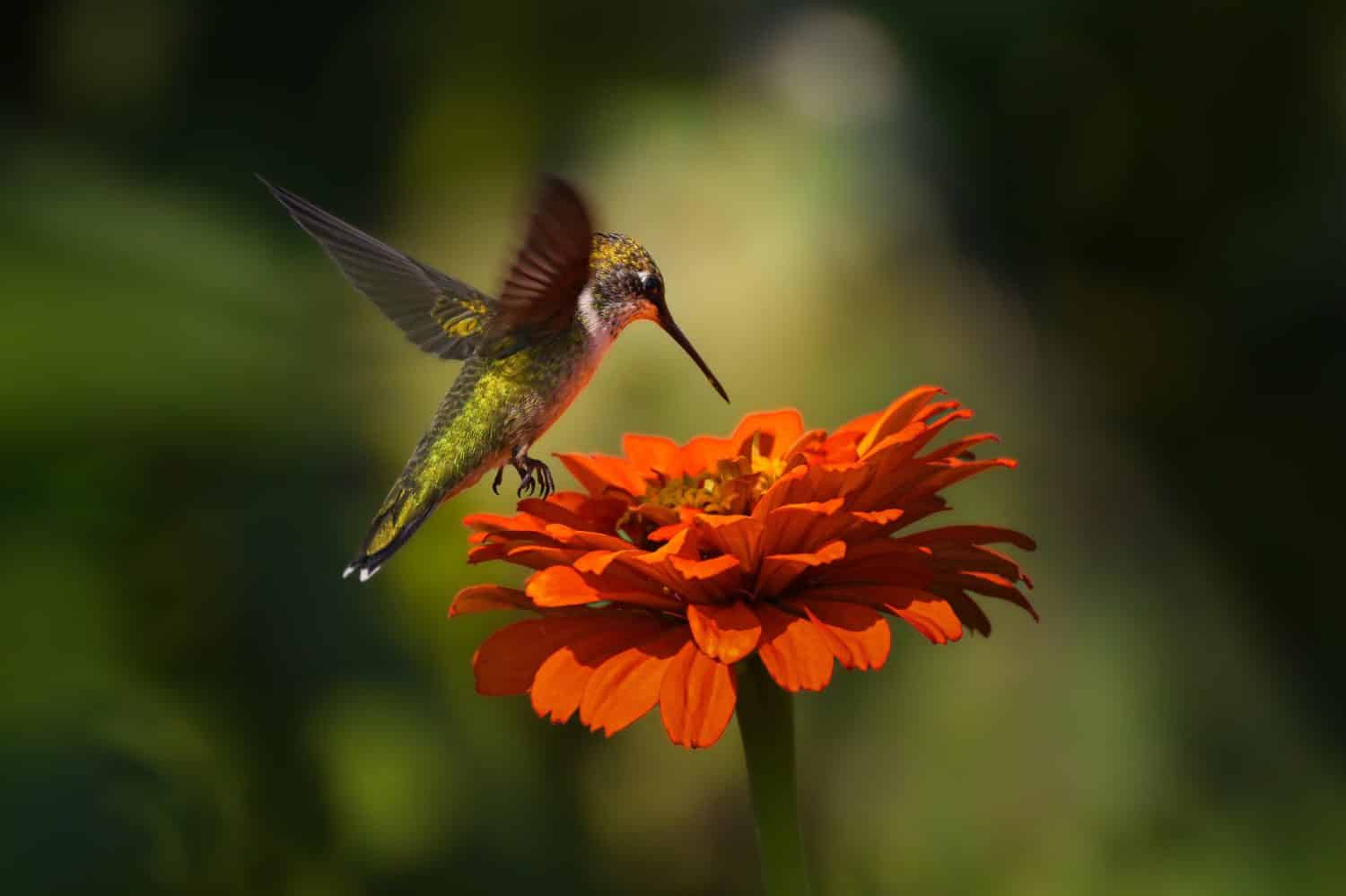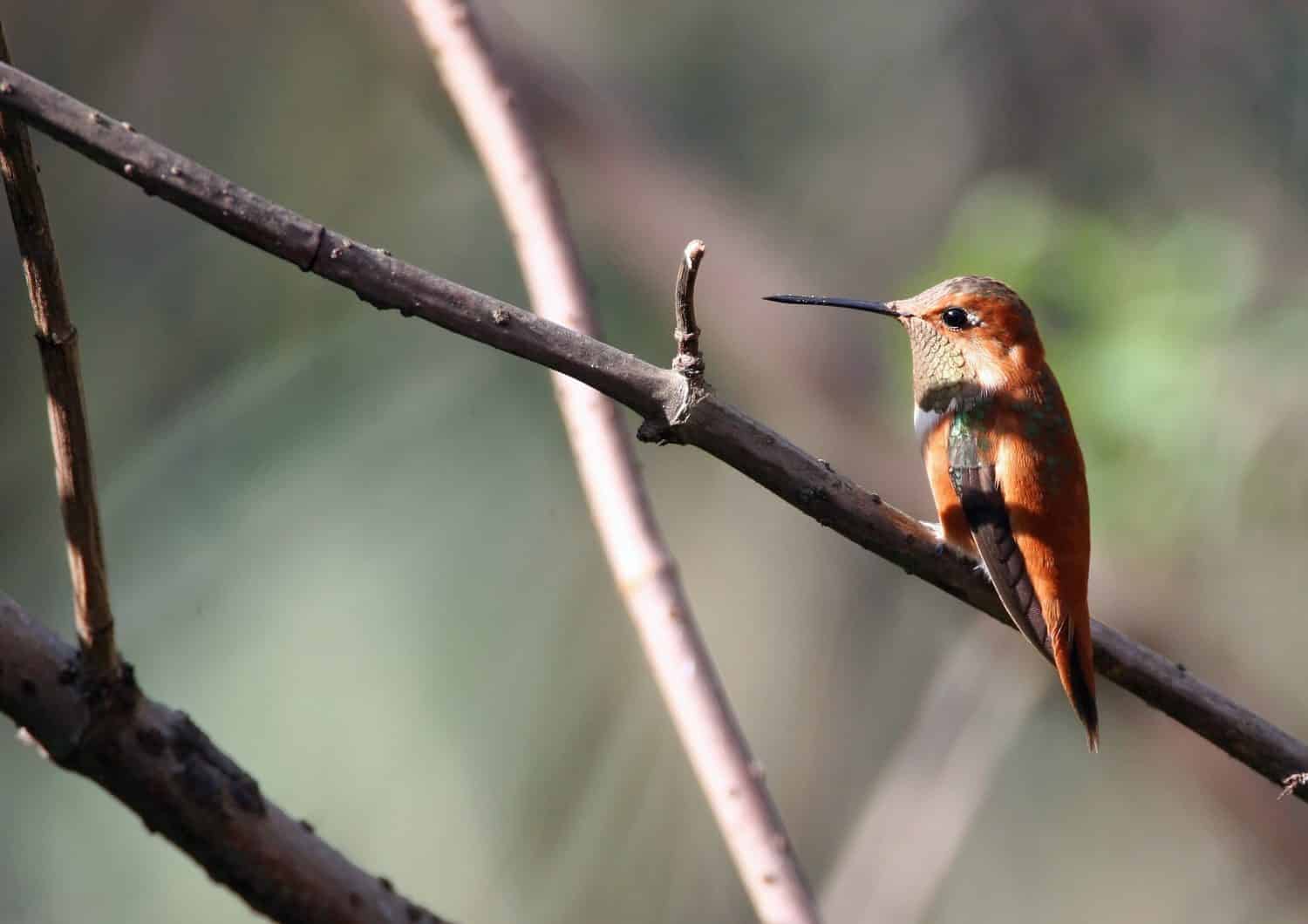- Hummingbirds usually leave Florida in autumn if they already live there.
- Some hummingbirds end up in Florida during migration because of warm weather.
- Only 3 hummingbird species are found in this state.
Florida offers a healthy and humid environment for 3 species of hummingbirds – black-chinned hummingbirds, rufous hummingbirds, and the ruby-throated hummingbird. Even though they prefer the warmth of Florida’s bright sunshine, they only stay for some of the year. These birds migrate as a way to find better food sources, only returning when they are ready to nest. When do they leave? When can you expect their return?
When Did Hummingbirds Leave Florida?

Hummingbirds migrate to find other food sources and be more comfortable during cold months.
©Ondrej Prosicky/Shutterstock.com
Typically, hummingbirds leave Florida as the weather starts to cool off. Each species sets out on its migration at different times. While the ruby-throated hummingbird starts their migration from Florida by the start of September, it sometimes leaves as early as the end of August. Usually, these birds don’t stay past October, depending on how long it takes them to build up their fat preserves.
The black-chinned hummingbird is seldom seen in the area already, so journeying through the state to migrate is just as rare. They leave at some point during the winter months (if at all). The rufous hummingbird sometimes spends the cold seasons in Florida, but any birds that leave wait until fall ends. Both stay quite long into the winter season if they end up in Florida, sometimes never going further south.
Which Hummingbirds Stayed In Florida?

Black-chinned hummingbirds are one of the only species seen in Florida, and they sometimes stay through the winter.
©rck_953/Shutterstock.com
While most of these hummingbirds migrate, the few stragglers in Florida are usually either the black-throated or rufous hummingbirds. Since they don’t need to go far south, most of these birds only get to Mexico and Central America. They live along the western side of the country, but the few seen in Florida will stay for the warm weather and food in the right conditions.
Where Do Hummingbirds Go When They Leave Florida?

Ruby-throated hummingbirds typically go as far south as Central America during migration.
©sanjaya pushpakumara/Shutterstock.com
Just like the migration patterns of each of these three hummingbirds are different, so is their destination. Ruby-throated hummingbirds set sail for Central America, traveling past the Gulf of Mexico. During one flight, they keep going for up to 20 hours, covering up to 600 miles before they rest. Some go as far as South America, depending on how far they need to go for food.
When black-chinned hummingbirds migrate, they mostly end up in Mexico, though some go towards the Gulf Coast instead. If Florida has a particularly warm winter season, some of these birds migrate to the east instead. Rufous hummingbirds sometimes end up in Florida to stay through the winter, while others spend the winter in Panama or Mexico instead.
When Do The Hummingbirds Return To Floria?

Since both rufous and black-chinned hummingbirds primarily live in the western United States instead, their return to Florida only happens in the winter as they migrate.
©Robert J Richter/Shutterstock.com
As the ruby-throated hummingbird returns, males usually get back to Florida first in anticipation of the females’ arrival. Females usually take another week before they start entering Florida again, quickly getting to work on their new nest. The return for the other two hummingbird species depends on where the bird stayed during the winter.
The photo featured at the top of this post is © Glenn Highcove/Shutterstock.com
Thank you for reading! Have some feedback for us? Contact the AZ Animals editorial team.






